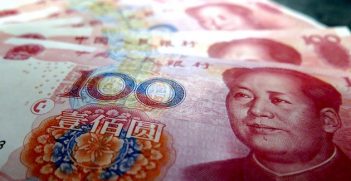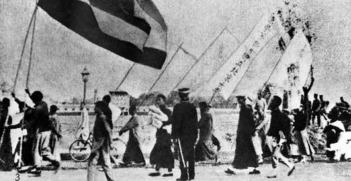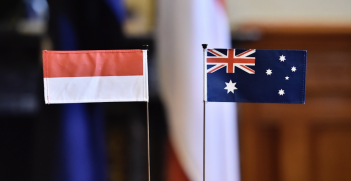People’s Liberation Army Turns 90 Amid Modernisation and Reform

China aims to transform its military into a cutting-edge force capable of challenging American military supremacy in Asia by 2020. This has major implications for the security environment in Asia.
China held a massive military parade on Sunday 30 July to celebrate the 90th anniversary of the founding of the People’s Liberation Army. The show of force highlights Beijing’s growing military clout and its ambition to become a top military power.
The parade is the first time that Beijing has commemorated the anniversary with a military parade since the founding of the People’s Republic of China in 1949. The event, held on an army base in remote northern China, involved some 12,000 troops and showcased the country’s latest military equipment, including battle tanks, stealth warplanes, electronic warfare systems and ballistic missiles.
“The world is not peaceful and peace needs to be defended,” China’s top leader Xi Jinping declared during his speech to his troops. “Our heroic military has the confidence and capabilities to preserve national sovereignty, security and interests… and to contribute more to maintain world peace.”
The parade is a clear message to the world of China’s determination to defend what it perceives to be, “core interests”.
China’s two million-strong military has modernised rapidly on the back of almost two decades of double-digit growth in defence spending. In 2017, China is expected to spend $153 billion, second in the world only behind the United States, which is expected to spend a whopping $584 billion.
Over recent years, China’s military has benefited significantly from new equipment and technologies. Just this year alone, China has launch its first home-built aircraft carrier, a new class of guided-missile destroyer (Type 055) and a new stealth fighter (J-20).
China is highly active in developing advanced military technologies. Earlier this year, Beijing established a new agency to identify, select and nurture advanced technologies for military application. Examples of these technologies include stealth capabilities, laser guns and electromagnetic weapons.
China’s military planners are also highly conscious of the importance of informational advantage in modern wars. In late 2015, China established the Strategic Support Force to carry out its military’s space, cyber and electronic warfare operations.
China’s military is also trying to make itself a leaner force by cutting away 300,000 non-combat troops.
In addition to equipment and personnel changes, China has also streamlined the roles and relationships between higher command, service branches and the five military theatre commands. These changes will improve the effectiveness of the command, control and coordination functions of China’s military.
The above developments are part of the larger Chinese military reform currently underway, the most comprehensive since the 1950s when its forces were remodelled along Soviet lines.
Beijing’s aim is to transform its military into an effective and high-tech fighting force capable of winning local wars under modern (information-intensive) conditions by 2020.
Australia should be concerned about China’s growing military power, because it has profound implications for peace and security in Asia and around the world. In fact, China’s growing might is already fundamentally altering the balance of power in Asia.
If China is successful in achieving its military reform goals (and there is every reason to believe it will be), America’s military preponderance in Asia will be seriously challenged. This does not mean that a Sino-American war is inevitable, but Washington will become less capable of keeping Beijing’s ambitions in check. Indeed, Beijing is in the process of displacing Washington as the top player in shaping the future security environment in Asia.
China’s neighbours are worried: Beijing’s rising military power gives it the leverage to settle territorial disputes in its favour.
Regardless of what we may think of the strength of Chinese territorial claims, its actions demonstrate Beijing’s confidence in its growing military. In Beijing’s calculus, its newfound power can (and should) be used to change the status quo, often to the detriment of China’s weaker neighbours.
It is natural for China to want to build a stronger military that is befitting of its growing international profile. China’s growing role in United Nations peacekeeping operations is an example of how Chinese power can contribute to a more peaceful world.
Yet, Australia should be wary of a China that continues to approach territorial disputes and redress grievances with the threat of military force or coercion. It is to be hoped that Beijing’s hubris does not lead it to underestimate the resolve of the United States and others in a crisis situation. Such a miscalculation, may one day, have very real and tragic consequences.
Adam Ni is a researcher at the Strategic and Defence Studies Centre, Australian National University. His areas of interest include Chinese foreign and security policy.
This article is published under a Creative Commons Licence and may be republished with attribution.





